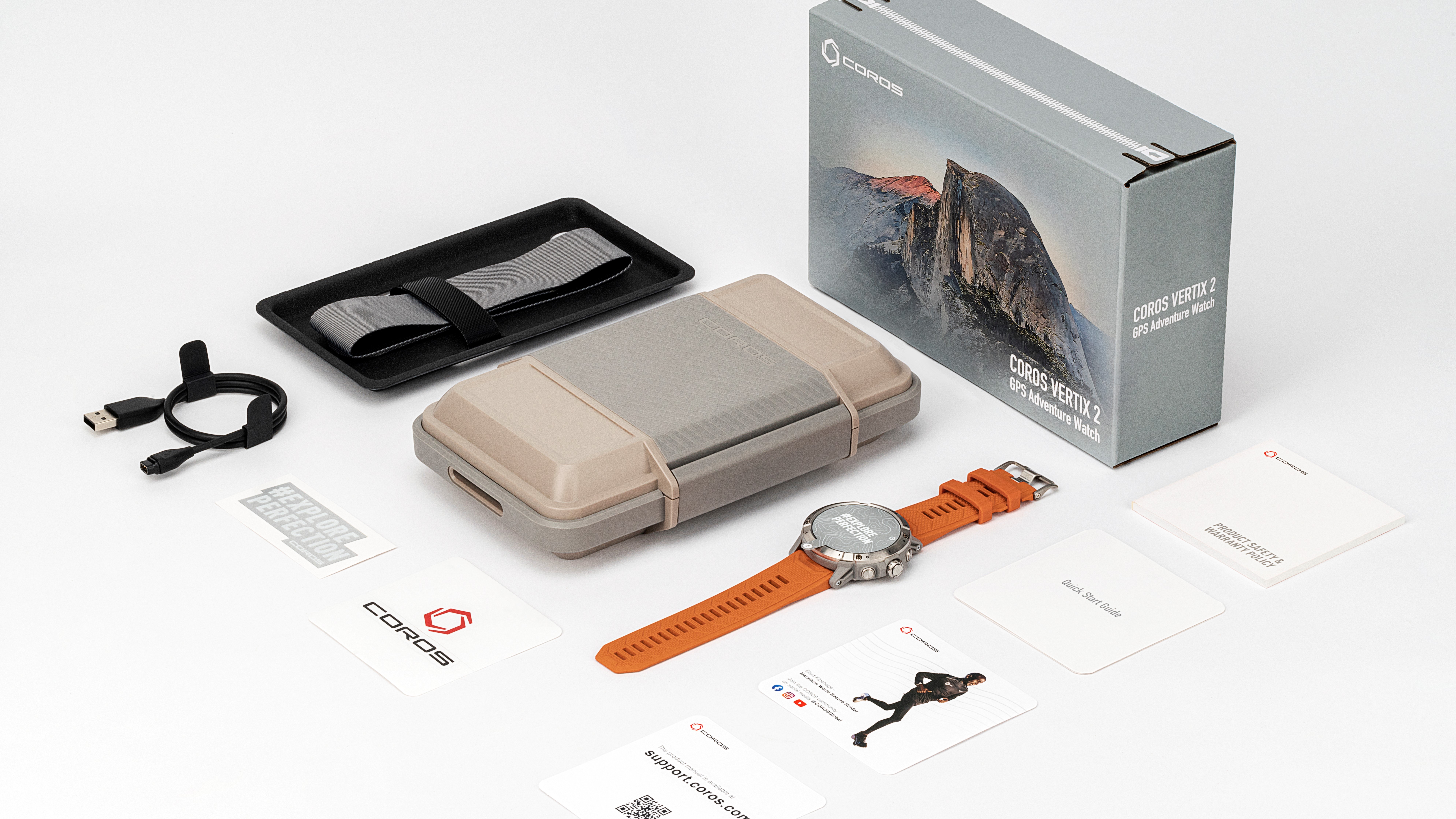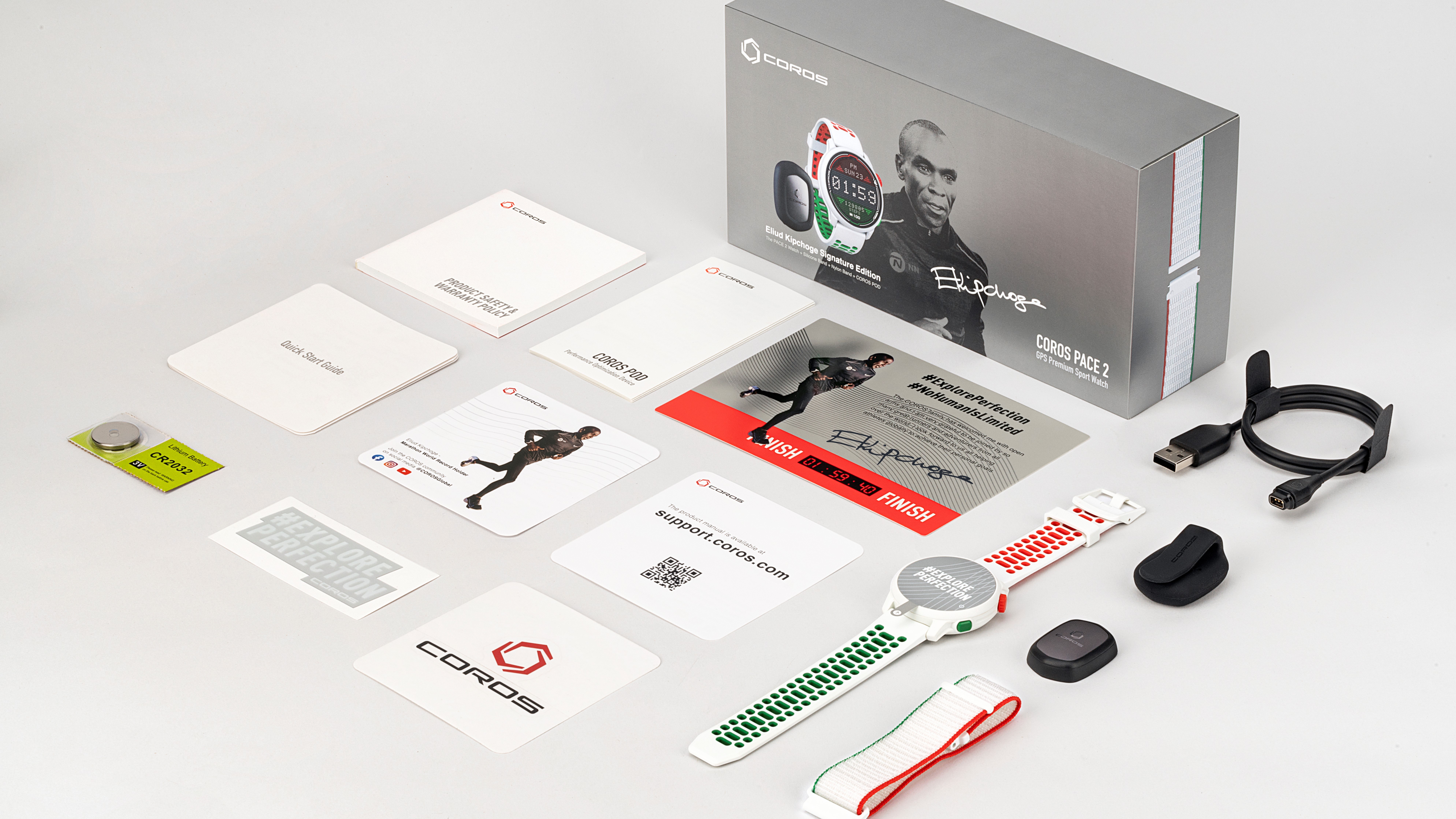Tough new Coros Vertix 2 challenges Garmin and Polar with global offline maps

Coros has launched a new rugged sports watch that gives Garmin and Polar a real run for their money with super-long battery life, offline navigation tools, and an extra tough design for long training sessions and multi-day events.
The original Vertix arrived in May 2019, and the new model follows a similar design, with a titanium case, sapphire glass-topped display, and textured silicone band. It arrives ensconced in a reusable protective case (we’ve already had our hands on it at TechRadar, and it feels extremely sturdy).
- We've tested and ranked the best running watches
- On a budget? Check out the best cheap running watches
- If you don't need GPS, take a look at the best fitness trackers
It has both a color touchscreen and physical buttons, allowing for fine control with your fingertips, and easy navigation when wearing gloves. Coros has reworked the watch’s interface to make this more straightforward.
The biggest upgrade, however, is battery life. While the original Vertix could keep running for 60 hours in full GPS mode, the new model keep running and tracking your location for a full 140 hours. For comparison, the Polar Grit X can run for up to 40 hours with full GPS tracking – as can the Garmin Fenix 6 Solar with sufficient sunlight.

Navigation tools also look impressive. The Vertix 2 communicates with all five major global satellite systems simultaneously (including GPS, GLONASS, Galileo, and Beidou) so it can accurately lock onto your location anywhere in the world.
There are global offline maps too, with landscape, topographical and hybrid views to ensure you can follow your planned route even when you’re exploring somewhere remote. If you’ve already invested in a Coros Vertix or Apex Pro watch, there’s no need to splash out on an upgrade just for this; both these watches will also be receiving topographical maps by the end of 2021.

This won't be quite as rich as mapping on the Vertix 2 (there's not enough space for a global map to be stored, so you'll only be able to download a map for your area), but it's a big upgrade nonetheless.
Sign up for breaking news, reviews, opinion, top tech deals, and more.
Finishing off the outdoor package, the Vertix 2 is compatible with Insta360 action cameras, allowing you to take pictures using the watch as a remote, so you're not limited to stretched-arm selfies.
The Vertix 2 is available in two colors (a shade of black called Obsidian and an orange hue called Lava), and costs $699.99 (about £500 / AU$1,000).
Going the distance
Coros has also announced a special edition of its Pace 2 watch, made to celebrate world champion marathon runner Eliud Kipchoge. This was the watch Kipchoge wore when he won the gold medal at this year’s Tokyo Olympic Games.
The Signature Edition Pace 2 is essentially the same as the standard version, but comes with some themed extras, including a choice of bands (silicone and nylon) with red and green accents to match the flag of Keyna, Kipchoge’s home country, plus a note from the man himself.

The package also include the Coros POD (Performance Optimization Device), which attaches to your clothing and provides analytics including ground time, stride length, cadence, and left/right balance.
Only 5,000 of the Signature Edition watches will be made, and they are available to order directly from Coros now.
Analysis: why GPS alone isn't enough
GPS is an essential tool for outdoor sports, but sometimes it's not enough. Getting accurate satellite data can be tough in cities, where tall buildings obstruct the signal, or cause the signal to bounce, and things get even trickier when you start to get more adventurous.
Deep tree cover can cause problems, as can tunnels and caves, but one of the toughest challenges is rock climbing. Watches that use GPS only can struggle to determine your vertical location, and even which face you're climbing.

If your watch uses multiple satellite systems simultaneously, more satellites will be visible at once, allowing it to pinpoint your location much more accurately.
That's not just important for tracking your workouts, but also for safety; many watches have excellent SOS tools that can alert an emergency contact if they detect a sudden change in velocity (indicating a fall), but that warning is only useful if the location data is accurate.

Cat is TechRadar's Homes Editor specializing in kitchen appliances and smart home technology. She's been a tech journalist for 15 years, having worked on print magazines including PC Plus and PC Format, and is a Speciality Coffee Association (SCA) certified barista. Whether you want to invest in some smart lights or pick up a new espresso machine, she's the right person to help.